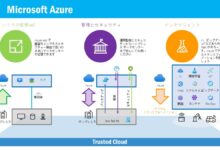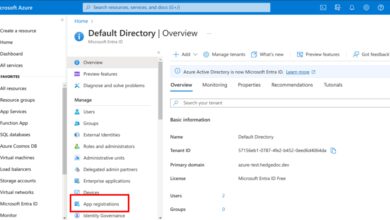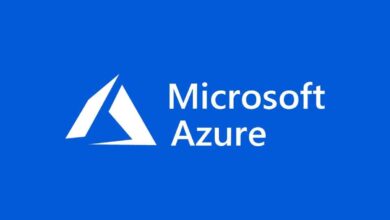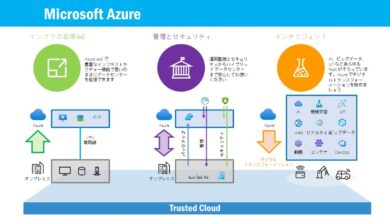msft azure: 7 Powerful Reasons to Choose Microsoft Azure Today
Looking for a cloud platform that blends enterprise-grade security, global reach, and seamless integration? Look no further than msft azure. It’s not just another cloud service—it’s a complete ecosystem empowering businesses to innovate, scale, and thrive in the digital era. Let’s dive into what makes it a game-changer.
What Is msft azure and Why It Matters

Microsoft Azure, commonly referred to as msft azure, is Microsoft’s comprehensive cloud computing platform. Launched in 2010, it has grown into one of the world’s leading cloud services, second only to Amazon Web Services (AWS) in market share. But what exactly is msft azure, and why should businesses care?
At its core, msft azure provides a vast array of services including computing, analytics, storage, networking, and machine learning—all delivered over a global network of Microsoft-managed data centers. Whether you’re a startup or a Fortune 500 company, msft azure offers scalable solutions that adapt to your needs.
Core Components of msft azure
The strength of msft azure lies in its modular architecture. Users can pick and choose from over 200 services to build custom solutions. Key components include Virtual Machines for scalable computing, Azure Blob Storage for unstructured data, Azure Functions for serverless computing, and Azure Active Directory for identity management.
- Compute: Virtual Machines, Kubernetes Service (AKS), App Services
- Storage: Blob, Disk, Queue, and Table storage options
- Networking: Virtual Networks, Load Balancers, and Content Delivery Network (CDN)
These building blocks allow developers and IT professionals to deploy applications quickly and securely. For more details on the full range of services, visit the official Microsoft Azure services page.
How msft azure Compares to Other Cloud Platforms
When compared to AWS and Google Cloud Platform (GCP), msft azure stands out for its hybrid capabilities and deep integration with Microsoft products like Windows Server, SQL Server, and Office 365. This makes it especially appealing to organizations already invested in the Microsoft ecosystem.
“Azure is not just about cloud infrastructure; it’s about enabling digital transformation across industries.” — Satya Nadella, CEO of Microsoft
While AWS leads in innovation and breadth of services, msft azure excels in enterprise support, compliance, and hybrid cloud scenarios. GCP, meanwhile, is strong in data analytics and AI, but lacks the breadth of on-premises integration that msft azure offers.
Key Benefits of Using msft azure
Organizations around the world are migrating to msft azure for compelling reasons. From cost savings to advanced AI tools, the platform delivers tangible benefits that drive business value.
Scalability and Flexibility
One of the biggest advantages of msft azure is its ability to scale on demand. Whether you need to handle seasonal traffic spikes or expand globally, Azure’s infrastructure automatically adjusts resources to meet demand.
This elasticity means you only pay for what you use. With pay-as-you-go pricing and reserved instances, businesses can optimize costs while maintaining performance. For example, an e-commerce site can scale up during Black Friday and scale down afterward—without over-provisioning.
Enterprise-Grade Security and Compliance
Security is a top priority for any organization, and msft azure delivers robust protections. The platform offers built-in threat detection, encryption at rest and in transit, and advanced identity management through Azure Active Directory (AAD).
Moreover, msft azure complies with over 90 global certifications, including ISO 27001, HIPAA, GDPR, and FedRAMP. This makes it a trusted choice for government agencies, healthcare providers, and financial institutions.
- Advanced Threat Protection for databases and virtual machines
- Zero Trust security model implementation
- Compliance Manager for auditing and reporting
Learn more about Azure’s security standards at Microsoft Trust Center.
msft azure for Hybrid and Multi-Cloud Environments
In today’s complex IT landscape, few organizations operate entirely in the public cloud. Many rely on a mix of on-premises systems, private clouds, and public cloud services. This is where msft azure shines with its hybrid cloud capabilities.
Azure Arc: Bridging On-Premises and Cloud
Azure Arc is a revolutionary service that extends Azure’s management capabilities to servers, Kubernetes clusters, and data services—regardless of where they are hosted. Whether your infrastructure is in a data center, at the edge, or on another cloud provider, Azure Arc allows centralized governance and monitoring.
This means IT teams can apply consistent policies, deploy updates, and monitor performance across environments using a single control plane. It eliminates the complexity of managing disparate systems and reduces operational overhead.
“Azure Arc enables customers to bring Azure services anywhere—on any infrastructure, in any cloud.” — Microsoft Azure Documentation
Azure Stack: Bringing the Cloud On-Premises
For organizations with strict data residency requirements or limited connectivity, Azure Stack offers a full-fledged Azure experience on-premises. It includes Azure Stack Hub for data centers and Azure Stack Edge for edge computing scenarios.
With Azure Stack, developers can build applications in the cloud and deploy them locally without re-architecting. This is particularly valuable in industries like manufacturing, defense, and healthcare, where data sovereignty is critical.
- Consistent APIs and tooling across cloud and on-premises
- Support for Kubernetes, VMs, and serverless functions
- Seamless integration with Azure public cloud services
Explore Azure Stack solutions at Azure Stack Overview.
AI and Machine Learning Capabilities in msft azure
Artificial Intelligence (AI) is no longer a futuristic concept—it’s a business imperative. msft azure provides a comprehensive suite of AI and machine learning tools that empower organizations to build intelligent applications without deep expertise in data science.
Azure Cognitive Services
Azure Cognitive Services are pre-built AI models that developers can integrate into applications with minimal code. These include vision, speech, language, decision-making, and search APIs.
For example, a retail app can use Computer Vision to analyze customer behavior via security cameras, or a customer service chatbot can leverage Language Understanding (LUIS) to interpret natural language queries.
- Face API for facial recognition and emotion detection
- Speech to Text and Text to Speech conversion
- Anomaly Detector for identifying unusual patterns in data
These services accelerate development and reduce time-to-market for AI-powered features.
Azure Machine Learning Studio
For more advanced use cases, Azure Machine Learning Studio offers a drag-and-drop interface and Jupyter notebook support for building, training, and deploying custom machine learning models.
Data scientists can leverage automated ML (AutoML) to test multiple algorithms and hyperparameters, selecting the best-performing model. The platform also supports MLOps practices for continuous integration and deployment of ML models.
Integration with popular frameworks like TensorFlow, PyTorch, and scikit-learn ensures flexibility and interoperability.
Get started with Azure ML at Azure Machine Learning.
msft azure DevOps and Developer Tools
Modern software development requires agility, collaboration, and automation. msft azure supports the entire DevOps lifecycle with integrated tools that streamline coding, testing, deployment, and monitoring.
Azure DevOps Services
Azure DevOps is a suite of services that includes Boards for agile project management, Repos for Git-based source control, Pipelines for CI/CD, Test Plans for manual and automated testing, and Artifacts for package management.
Teams can plan sprints, track bugs, automate builds, and deploy applications to any environment—all within a unified platform. This reduces tool fragmentation and improves team productivity.
- Seamless integration with GitHub and third-party tools
- YAML-based pipelines for version-controlled CI/CD workflows
- Live site monitoring with Application Insights
Discover how Azure DevOps enhances team collaboration at Azure DevOps Overview.
GitHub Integration and GitHub Actions
Since Microsoft acquired GitHub, integration between msft azure and GitHub has become seamless. Developers can trigger Azure deployments directly from GitHub repositories using GitHub Actions.
This allows for automated testing and deployment workflows that respond to code commits or pull requests. For instance, pushing code to a ‘main’ branch can automatically trigger a build, run unit tests, and deploy to a staging environment in msft azure.
“The combination of GitHub and Azure gives developers the power to innovate faster and deliver value continuously.” — GitHub Engineering Team
This tight integration strengthens the developer experience and accelerates software delivery.
Cost Management and Pricing Models in msft azure
One of the biggest concerns for organizations adopting cloud services is cost control. msft azure offers flexible pricing models and powerful tools to help businesses manage and optimize their cloud spending.
Pay-As-You-Go vs. Reserved Instances
The most common pricing model in msft azure is pay-as-you-go, where you’re billed based on actual usage. This is ideal for startups and projects with unpredictable workloads.
For predictable, long-term workloads, Azure offers Reserved Virtual Machine Instances, which can save up to 72% compared to pay-as-you-go rates. Reservations can be made for 1 or 3 years and apply to compute, storage, and certain PaaS services.
- Compute: Save on VMs with reserved capacity
- Networking: Reserved bandwidth and load balancer hours
- Hybrid Benefit: Use existing Windows Server licenses for cost savings
Learn more about Azure pricing at Azure Pricing Page.
Azure Cost Management + Billing
Azure Cost Management is a built-in tool that provides visibility into spending across subscriptions, resource groups, and departments. It offers budgeting, forecasting, and cost analysis features.
Administrators can set spending alerts, allocate costs by team or project, and identify underutilized resources. For example, you might discover idle virtual machines that can be shut down to save money.
The tool integrates with Power BI for advanced reporting and supports export to CSV for external analysis.
With proactive cost management, organizations can avoid bill shock and ensure cloud investments deliver maximum ROI.
Real-World Use Cases of msft azure
The true power of msft azure becomes evident when we look at how real organizations are using it to solve business challenges and drive innovation.
Healthcare: Improving Patient Outcomes with Azure AI
Hospitals and healthcare providers are leveraging msft azure to enhance diagnostics and patient care. For example, the University of California, San Francisco (UCSF) uses Azure AI to analyze medical images and detect early signs of diseases like cancer.
By integrating machine learning models into radiology workflows, doctors receive faster insights, reducing diagnosis time and improving treatment accuracy.
Retail: Personalizing Customer Experiences
Retailers like ASOS and Walmart use msft azure to power personalized shopping experiences. Azure’s analytics and AI tools process vast amounts of customer data to recommend products, optimize inventory, and predict demand.
For instance, Azure Synapse Analytics enables real-time analysis of customer behavior, allowing dynamic pricing and targeted marketing campaigns.
Manufacturing: Enabling Smart Factories
Companies like BMW and Siemens use msft azure to build smart factories. By connecting machines, sensors, and production lines to Azure IoT Hub, they gain real-time visibility into operations.
Predictive maintenance models analyze equipment data to prevent downtime, while digital twins simulate factory layouts for optimization.
These use cases demonstrate how msft azure is not just a technology platform but a catalyst for digital transformation.
What is msft azure?
msft azure is Microsoft’s cloud computing platform that offers over 200 services for computing, storage, networking, AI, and more. It enables businesses to build, deploy, and manage applications across a global network of data centers.
How does msft azure ensure security?
msft azure provides enterprise-grade security with encryption, threat detection, identity management via Azure Active Directory, and compliance with over 90 global standards like GDPR and HIPAA.
Can msft azure be used for hybrid cloud setups?
Yes, msft azure supports hybrid environments through services like Azure Arc and Azure Stack, allowing seamless management of on-premises, edge, and multi-cloud resources.
Is msft azure more expensive than AWS?
Not necessarily. While AWS may have a broader service catalog, msft azure often offers better pricing for enterprises already using Microsoft products, especially with Hybrid Benefit and reserved instances.
How can developers benefit from msft azure?
Developers can use msft azure for CI/CD pipelines, serverless computing, AI integration, and DevOps collaboration through tools like Azure DevOps and GitHub Actions.
Microsoft Azure—msft azure—is far more than a cloud provider. It’s a strategic platform that empowers organizations to innovate, scale securely, and embrace digital transformation. With its hybrid capabilities, AI tools, developer-friendly ecosystem, and global infrastructure, msft azure stands as a powerful ally in the modern tech landscape. Whether you’re building your first app or transforming an enterprise, msft azure offers the tools, flexibility, and support to succeed.
Further Reading:









